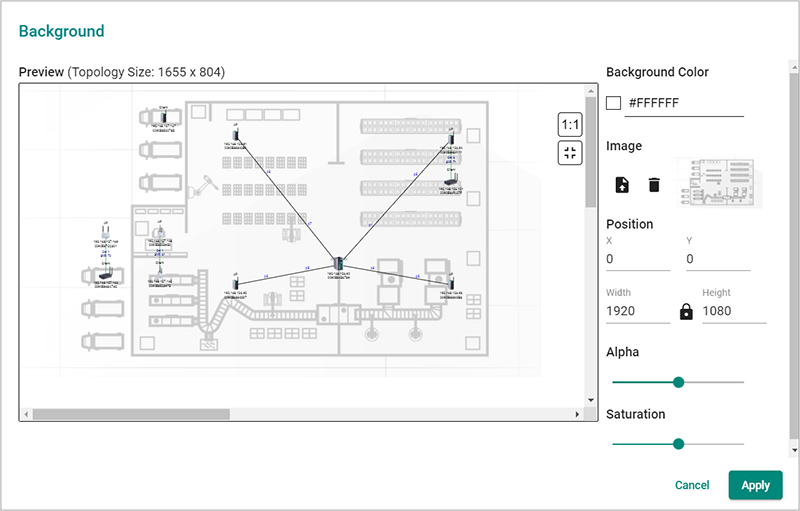In today’s scenario, automation has emerged as an unstoppable trend, particularly due to the global impact of the pandemic on various industries. This trend offers new prospects and challenges to companies. With the rise of e-commerce, there has been a surge in pressure on logistics and an increase in the demand for raw materials as economies recover and face labor shortages. This situation has emphasized the need for automation on a global scale, leading to a surge in demand for automated material handling (AMH) systems. Wireless AMH systems, with their reduced costs and enhanced capabilities, have enabled companies to achieve significant improvements in productivity and efficiency.
However, the intricate maintenance requirements and the risk of operational downtime pose significant concerns for companies. Unstable wireless communication stands out as a major nightmare in wireless AMH deployments as inconsistent wireless signals can easily disrupt operations. Companies often depend on system vendors for maintenance services, incurring additional expenses and potentially causing longer downtimes. In this write-up, we present several suggestions to alleviate these concerns by empowering you to manage the covert network communications of your AMH systems effectively. Efficient management and troubleshooting of your wireless network enhance the uptime of your AMH systems and bolster your business competitiveness.
1. Visualize Your Network for Comprehensive Insight
What you cannot see, you cannot manage. In AMH scenarios, Wi-Fi connections must dynamically adapt as vehicles move. Managing these wireless communications is challenging due to their invisible nature and susceptibility to various factors, making it hard to identify abnormalities. For example, when a Wi-Fi client on a moving vehicle fails to roam properly and connect to the designated access point, you may only notice the operational disruption without understanding the root cause. Wireless network visualization is especially advantageous for critical applications in demanding environments where wireless equipment encounters electromagnetic interference and other disruptive elements. Having a holistic view of your wireless network allows real-time monitoring of wireless devices to ensure smooth operations.
Having visualization and management software that provides a complete network overview is crucial. Understanding the network architecture and individual device relationships better, along with a dynamic network topology that automatically updates when changes occur, enables you to monitor wireless connections’ latest status at a glance. Access to aggregated device information helps in assessing wireless devices’ performance and identifying potential anomalies.

Real-time visualization of wireless connections on a dynamic topology
2. Establish Alerts for Swift Response to Issues
Preventing unexpected downtime is crucial. With early warning systems, you can react promptly to network irregularities before they escalate. By monitoring and analyzing your network over time, you can set wireless performance thresholds. When a threshold is breached, such as when traffic load exceeds normal levels by 50%, real-time alerts immediately flag the anomaly to enable prompt action. Early detection of abnormalities offers you the time to address issues before they impact your operations. In cases where you cannot resolve the problem internally, real-time alerts provide the opportunity to seek assistance from a maintenance provider.
3. Utilize Historical Data for Rapid Troubleshooting
In the past, when network issues proved too complex to handle, companies would seek maintenance providers’ help. Support engineers arriving on-site often spent a week aggregating event logs from relevant devices, performing time corrections, and attempting to reconstruct the issue. Inaccurate reconstructions led to lengthy troubleshooting processes to resolve the issue. This process was both time-consuming and costly.
Effective network visualization software not only displays your network’s current status but also provides insight into historical network performance, facilitating focused troubleshooting efforts. By reviewing the history of problematic devices, you can easily identify issues, analyze root causes, and address the core problem. Leveraging historical network and device data significantly streamlines your troubleshooting approach, eliminating the need to consolidate and scrutinize individual device logs.
4. Acquire the Correct Instruments
You must not overlook this suggestion. Regardless of a tool’s effectiveness, you are likely to discontinue its use if it is overly complex or lacks user-friendliness. Most network management software caters to IT personnel, making it less accessible for operational technology (OT) engineers. Identifying software that presents necessary information clearly through an intuitive interface is essential. For example, as automated vehicles continually switch between different access points in a facility, having network management software that overlays the network topology on a facility floor map simplifies locating vehicles by checking the client’s wireless connection. This feature saves considerable time in identifying malfunctioning client devices.

Network topology layered on a facility floor map for easy device identification
Commence Visualizing and Regulate Your Wireless AMH Network
Operational technology leaders in AMH facilities must prioritize intuitive network management and visualization software to effectively handle reliable wireless networks and maximize uptime. The Wireless add-on module for Moxa’s MXview includes dynamic topologies, roaming playback, and device performance dashboards to enhance efficiency and efficacy in wireless AMH applications.
Moxa is currently offering a complimentary one-year fully functional trial of the MXview Wireless module for customers activating it before December 31, 2021. For additional details, visit the MXview product page.
- Not Only for Automobiles: Discovering CANbus Technology in Various Industrial Settings - October 29, 2024
- Boost Your Network Performance: An Exciting Manual to PoE Switches! - September 10, 2024
- Understanding Gigabit Switches: Industrial vs Regular Gigabit - September 4, 2024


